It was probably not a good feeling when the scientists restoring riparian areas along California’s Sacramento River discovered they had something of an arboreal mystery on their hands. The problem? As trees in some of their restoration sites grew to maturity, they didn’t look like the native western sycamores the scientists were sure they had planted.
“It was a serious concern,” said Greg Golet, senior ecologist for The Nature Conservancy in California, “because it lead us to believe that, well, these trees we’d planted weren’t fully native. And that was not good. Maybe they were a hybrid between native and non-native sycamores, and we knew we’d better figure out what was going on.”
It was a serious concern and also a puzzle because of all the things restoration scientists are obsessive about (and there are many), the meticulous sourcing and use of native species in restoration sites tops the list. There had to be a very good reason cuttings planted as western sycamores were turning out to be something else.
The results of the scientists’ sleuthing — recently published in Conservation Genetics — revealed that (spoiler alert) their suspicions were correct, and what they had planted as native western sycamores turned out to be introgressive hybrids between the native trees and an introduced ornamental sycamore, Platanus hispanica, more commonly known as the London plane tree.
A Short History of P. Hispanica
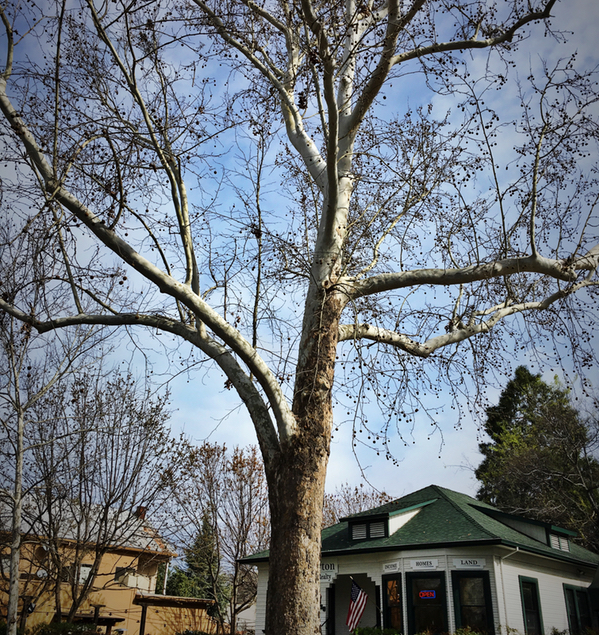
The London plane tree is itself a hybrid created more than 300 years ago by some industrious early Enlightenment horticulturalists (or pre-Enlightenment depending on how you prefer to parse the dates) at the Oxford Botanical Garden in England. As they were experimenting with cross-breeding plants, they interbred two species of sycamore: Platanus orientalis, which is native to Asia Minor, and Platanus occidentalis, native to the eastern United States.
Once the trees were successfully crossed, the hybrid species came to be known as P. hispanica, the London plane tree. For the scientists at Oxford, It turned out to be an incredibly successful experiment. Fast forward to today and the London plane tree seems to be the most abundant ornamental tree in many of the world’s largest cities, including Milan, London, Rome and Paris. It is also extremely popular in America, especially in places like New York, Illinois, and, most importantly for our story, California.
Clearly, P. hispanica, which was introduced to California in the late 19th century, boasts some impressively hardy genes and since sycamores are wind pollinated, those genes are widely and easily shared. While that’s good news for the London plane tree, it’s not such good news for the western sycamore or the wildlife species that evolved using it as habitat.
Hybrid or Native: Does it Really Matter?
In all fairness, it’s important to note that the London plane tree can be the ideal urban tree: not only is it tall and leafy — providing excellent shade for city streets and parks — but it is also resistant to disease and extremely tolerant of air pollution. That said, its presence along the Sacramento River comes with significant drawbacks to the ecosystem.
It’s a Goldilocks problem. The London plane tree can be a good fit for cities and suburbs because in addition to its disease resistance and tolerance of pollution, it’s also, unlike the western sycamore, a relatively stately tree. It was actually that stateliness that helped give scientists their first strong clue that the trees at some of their restoration sites might not be natives. Western sycamores are also very impressive, but they have a tendency toward, well, a certain scragliness with missing limbs and crooked branches.
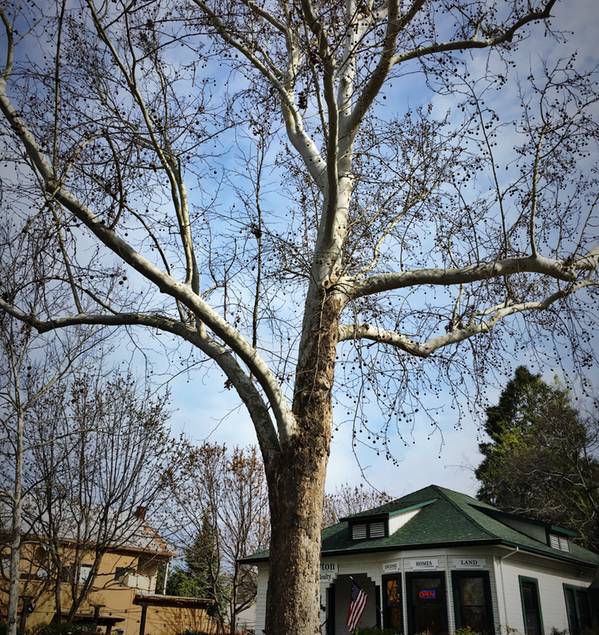
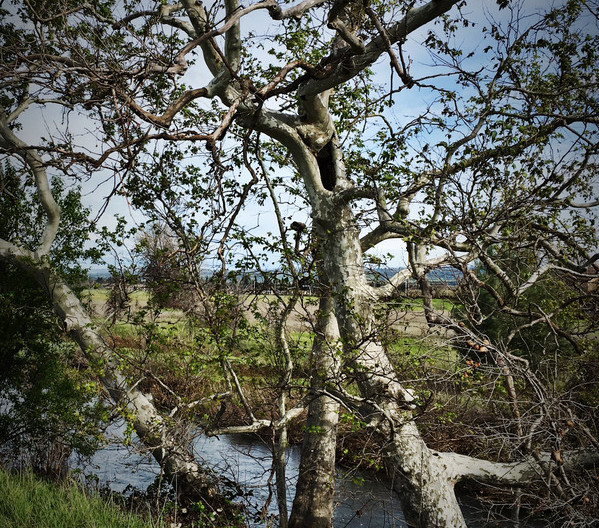
“The thing is,” explains Greg Golet, who also co-authored the paper, “the hybrids between the London plane tree and the western sycamore don’t suffer as much limb loss. The really neat thing about the native trees is that when limbs break off, they create these amazing cavities that many species — owls and ring-tails and wood ducks, raccoons and others — need for habitat. You think, ‘oh, it [the native western sycamore] is not as good a tree because it shows some decadence’, but when you think about how wildlife uses it as habitat structure, it’s apparent that it is a really valuable tree for the ecosystem.”
The western sycamore is especially valuable for monarch butterflies and several species of nesting birds because it provides their preferred over-wintering habitat.
Genetics: Problem and Solution
Introgressive hybridization, which takes place when hybrid crossing continues over time, can be an insidious and intractable problem because it erodes the genetic composition of the local species. As the generations progress, the non-native species’ genes essentially swamp the genes of the native, often leading to extinction of the native genotype. But the changes between species can be very subtle, especially to human eyes.
It’s that Goldilocks problem again, and it’s not limited to western sycamores.
When native prickly pear cacti hybridize with non-native mission cacti, the hybrid cacti have much smaller spines. This could be good news for people — less chance of getting stabbed — but it’s bad news for cactus wrens that depend on the large spines of the prickly pear for nest protection and concealment. And if you’re a human who cares about cactus wrens, or even biodiversity in general, it’s bad news for you, too.
In the case of the western sycamore, the loss of genetic distinctiveness — due to ongoing introgressive hybridization with the London plane tree — carries a strong risk that the western sycamore could eventually become extinct as a species. Fortunately for all the species that depend upon western sycamores for survival, genetics enabled the scientists to identify both non-native trees that were the source of the hybridization, and remnant natives that can be propagated in future restoration plantings.
Genetic Vigilance
“There were two primary motives for our study,” says Golet. “First, let’s figure out what’s hybridizing with native sycamores, and second, let’s locate the natives out on the river and use those as source populations for the restoration going forward. The really good news is that as a result of the genetic work, we can get cuttings from trees that have been analyzed as part of this research and plant those and be confident that they’ll give rise to native western sycamores.”
“We discovered that the older the tree, the less likely it was to be a hybrid. But the high incidence of hybrid individuals in the intermediate age ranges told us that as soon as the London plane tree arrived in California, it started hybridizing with our native western sycamores.” (For brief discussion and really cool GIF on this work, check out lead author Matthew Johnson’s post on his blog).
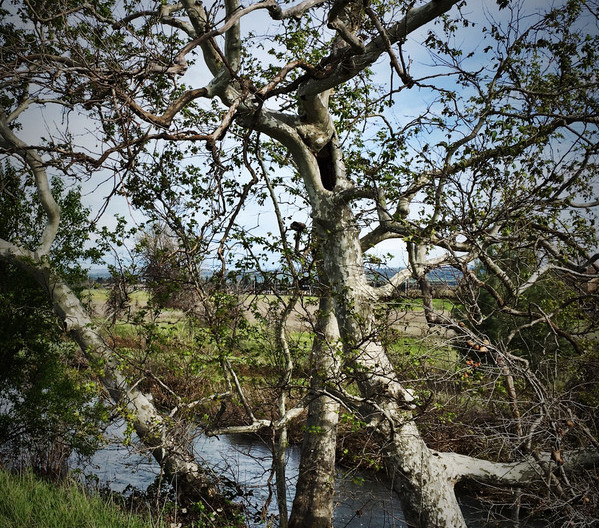
The study also identified several larger trees that are “putatively pure,” and can be used for propagation so, as the restoration continues, scientists can be assured that they are planting native Western sycamores. It’s also useful information for people, from homeowners to city planners and arborists, who want to be sure they’re using truly native trees in their landscaping.
“This study,” says Golet, “also shows us why it’s so important to not just plant a species that’s native to a place, but for the sake of our native plants and animals, we need to also be sure we plant the right subspecies, and now that we have solid genetic analysis to inform our efforts, we can do this with the sycamore.”
Postscript: The mystery of the western sycamores that weren’t? Solved. All it took was sophisticated genetic analysis, a horticultural history lesson, and a couple of slingshots (for collecting leaf samples from the tops of trees). That’s another important part of the story — no matter how advanced and technical our science becomes, it’s still nice to know there will likely always be a need for muddy boots fieldwork, simple tools and scientists with good eye-hand coordination.
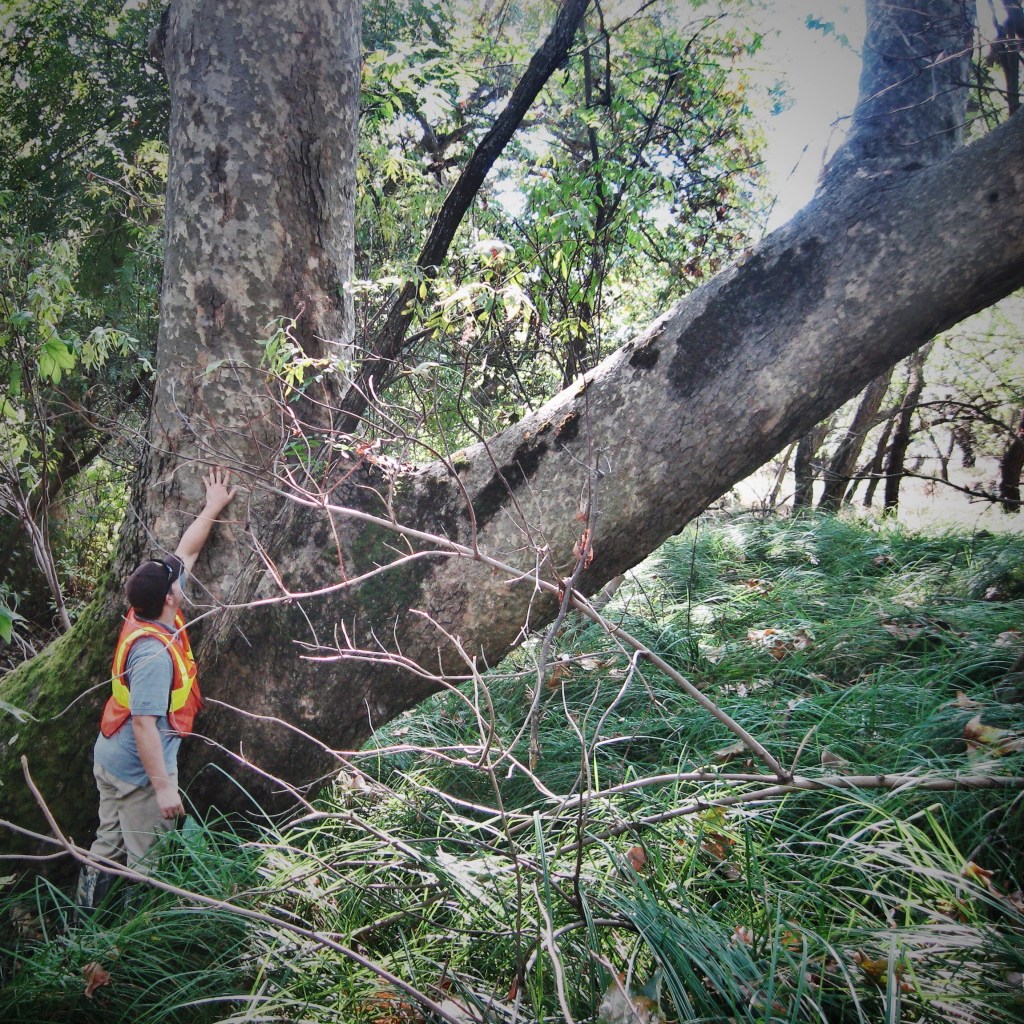



Yes but how did the hybrids get into the restoration area? Were seedlings, or seeds taken into a nursery and grown there? How did people not know that they might be hybrids? Did all the trees that were planted in the restoration area turn out to be hybrids, or were some native? Can a native Sycamore be, as it were, close enough, if they only have a little bit of London Plane? Did the hybrids in the restoration area have to be cut down?
“It’s that Goldilocks problem again, and it’s not limited to western sycamores.” – Indeed, this along with Canadian researchers article from the early 2000s (I don’t have reference any more but one surely can find the published/peer reviewed paper) should raise further alarm about GMO crops: Canadian paper showed cross-pollination / hybridization of GMO corn with non-GMO corn at distances up to 200km from the nearest GMO planting… Unlike Sycamores in the article, this is greater problem as GMO hybrids are typically made sterile for business purposes: farmer planting from his (expected) natural corn crop can find large proportion of his seeds to be sterile hybrids with potentially grave consequences for his livelihood.
Thanks – as a native Californian aged 93, I loved all of the information in this story. Thanks for telling me there is hope for the native Sycamore which I remember from my childhood.
Talk about a bummer, well, time to turn those hybrids into genuine hybrid toothpicks and plant the right sycamores.
A little bit saddening, as I used to manage a stream restoration grant program for California’s Department of Water Resources, and we funded restoration projects, including native riparian species, all over the urban parts of the state. Western (we presumed) sycamores were commonly included on the restoration planting list, and there was always a chance that the trees we were planting might be pollinated by street-tree sycamores, but we never checked to see if the western sycamores we planted had already been tainted in the production facility by the introduced hybrid.
They will still offer some of the habitat benefits, like shade for the fish and pollen for the insects, but alas, not all the cavities for arboreal dwellers.
Earle Cummings